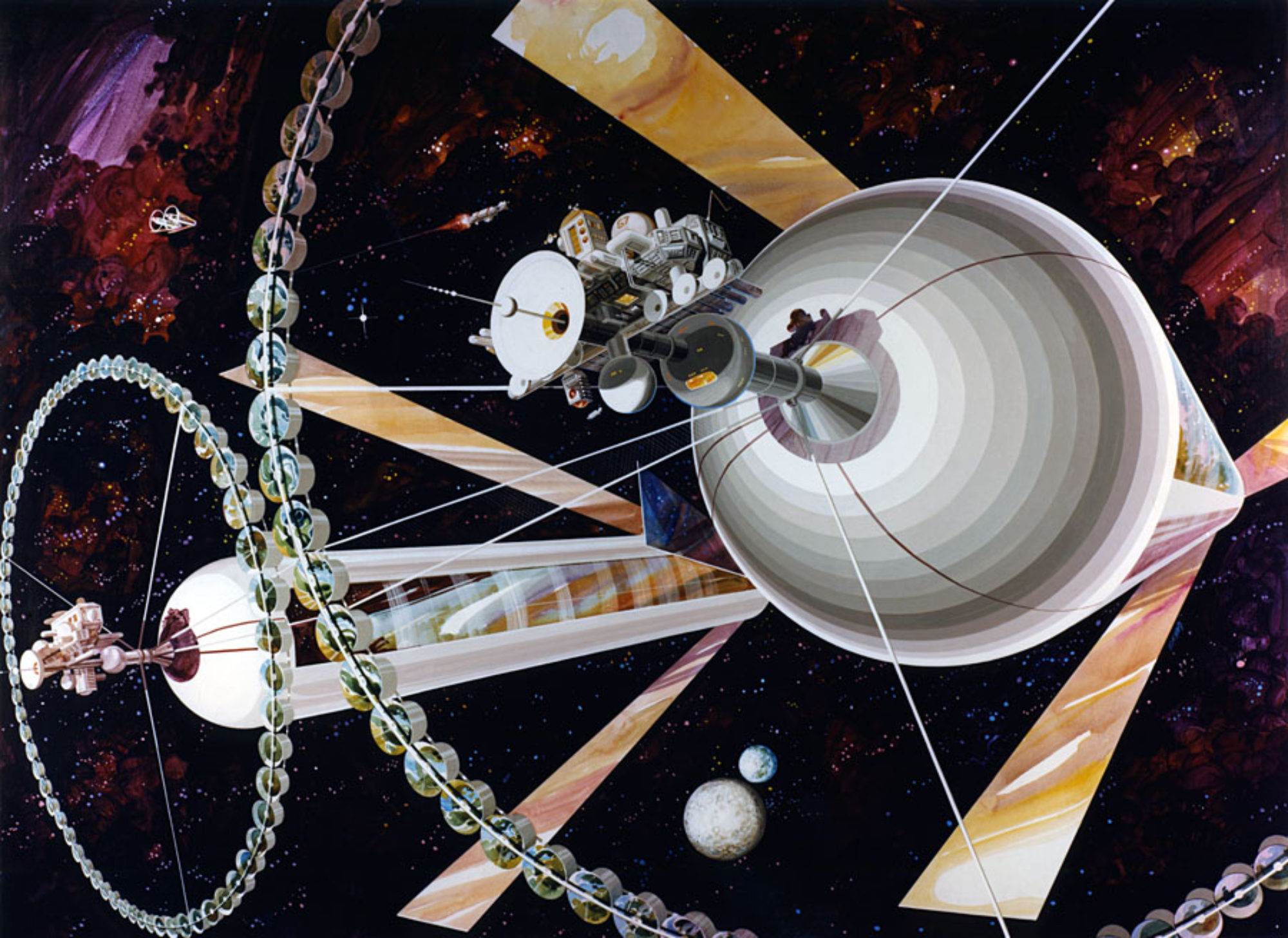
Eventually we will get to the stars. It may not happen in our lifetime but its going to happen some day. Adam Crowl has provided a nice historical review of the interstellar pioneers from the last century that worked out the physics of the starships that will take us there. He does this in a chapter he wrote for James and Gregory Benford’s ground-breaking anthology Starship Century which was based on the findings of the 100‐Year Starship Symposium seeded by a DARPA solicitation and executed by NASA back in 2011.
Crowl begins the story with the early days of rocketry pioneered by Tsiolkovsky determining the rocket equation and Goddard and others experimenting with liquid fueled rockets. Tsiolkovsky was the first to come up with the idea of a generation starship (sometimes referred to as a worldship) when he realized that existing chemical propellants would be insufficient to fuel a space ship for interstellar travel.

More practical interstellar craft don’t come on the scene until after WWII when advanced propulsion concepts really take off. The possibility of harnessing light to “push” a rocket, feasible because photons carry momentum, first appeared in science fiction. As it turned out, physicists realized that to generate the needed thrust with light pressure would require enormous amounts of energy, the waste heat of which would vaporized the vessel. Nevertheless, the photon rocket was still being discussed as late as 1972 when I first saw the rendering at the top of this post by David Hardy in the book he coauthored with Patrick Moore called Challenge of the Stars. Fast forward to today, Dr. Young K. Bae’s Photonic Laser Thruster shows great promise if it can be scaled up for interstellar travel.

In the latter half of the last century, as the physics of nuclear energy and laser technology progressed, we see a proliferation of many concepts for star travel, including various forms of fusion rockets, laser sails, antimatter propulsion and my personal favorite, the Bussard ramjet. Conceived by the physicist Robert Bussard in 1960, the ship eliminates the need to carry fuel by collecting hydrogen from the interstellar medium using a magnetic field as a ram scoop and compresses the gas to fusion temperatures to create thrust. Crowl summarizes some of the physical limitations of the original concept and discusses several physicist’s alternative designs to address them.
One concept that didn’t make it into Crowl’s piece was developed recently by Leif Holmlid and Sindre Zeiner-Gundersen. Called the laser induced annihilation drive, it uses a pulsed laser to initiate “antimatter-like” annihilation reactions in hydrogen fuel producing high velocity K meson elementary particles at relativistic speeds to generate thrust.

When I asked Crowl if he had any updates to some of the starship propulsion concepts he sent me an article penned by an unknown author for Medium that came up with another alternative to address the limitations of the original Bussard Ramjet. The author, who goes by the pseudonym “deepfuturetech”, reminds us like Crowl discussed in his piece, that the cross section ( i.e. the probability that a given atomic nucleus or subatomic particle will undergo a nuclear reaction in relation to the species of the incident particle) of the Bussard ramjet proton-proton fusion reaction is too low to be useful. Deepfuturetech proposes a different fusion mechanism via (p,n) reactions which involve a nucleus capturing a proton and subsequently emitting a neutron. These type of reactions have higher cross sections and could be tested in reactors in the near future. Further analysis is needed to confirm whether these reactions could produce neutrons at sufficiently low energy cost to enable profitable hydrogen fusion.

Incidentally, Crowl talked about many of these starship concepts at a subsequent Starship Century Symposium held in 2013 by the Arthur C. Clarke Center for Human Imagination in collaboration with the Benford brothers who shared the highlights from their Starship Century anthology summarizing scientific results from the 100‐Year Starship project. You can also get a “Deeper Future View” of his independent research on interesting items not typically covered by the mainstream science media at his blog Crowlspace.
